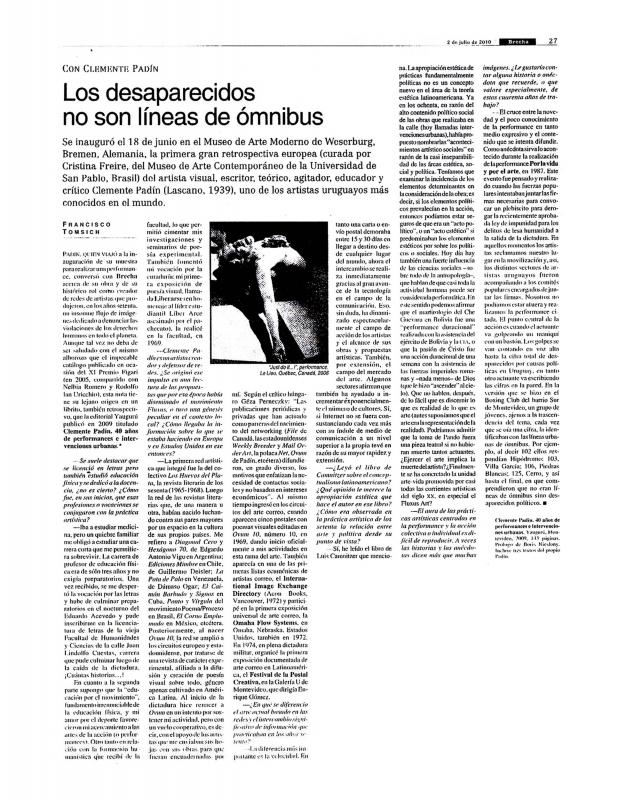Many movements were started in Latin America during the 1960s; some were ideologically aligned with the Cuban Revolution, others sprang up in response to the political and economic crises that affected several countries in the region. These movements became increasingly important and were supported by artists’ and intellectuals’ organizations. The artists Clemente Padín (b. 1939) and Jorge Caraballo (1941–2014) viewed art as a way to expose the underlying causes of the conflicts. They used photography, signography, and visual poetry to do so, and, as a result, Uruguayan artists began to explore the use of conceptual art as a way of responding to the government’s authoritarian policies and the cultural policies of the power groups that had been entrenched since the 1950s. In 1966, Padín and a group of fellow artists—Héctor Paz, Juan José Linares, and Julio Moses—started publishing the magazine Los Huevos del Plata in response to the “editorial monopoly” of the so-called Generación del ‘45 (Mario Benedetti, Idea Vilariño, and Ángel Rama, among others). 16 issues of the magazine were published over the course of three years; the goal was to reject the styles that were favored in literary and cultural circles at the time, and encourage new experimental ideas in poetry, such as spatialism, concretism, visual poetry, and even the work of surrealist poets. In 1969, after the magazine shut down, Padín started another one called OVUM 10 whose poetic and visual aesthetic was reminiscent of the calligrammes produced by poets such as the Frenchman Guillaume Apollinaire (1880–1918), the Mexican Juan José Tablada (1871–1945), the Spaniard Guillermo de Torre (1900–71), the Catalonian Joan Salvat-Papasseit (1894–1924), the Hispano-Cuban Francis Picabia (1879–1953), and the Portuguese Mario de Sá-Carneiro (1890–1916). OVUM’s motto was: “Everyone who shouts differently is one of us, because the problems here are the structure, the forms of expression, the trash (…)”.
In this document Alfredo Torres describes the Uruguayan cultural conditions that gave rise to Los Huevos del Plata, underscoring the parricidal nature of the publication.
[As complementary reading, see in the ICAA digital archive by Francisco Tomsich “Los desaparecidos no son líneas de ómnibus” (doc. no. 1240643)].

